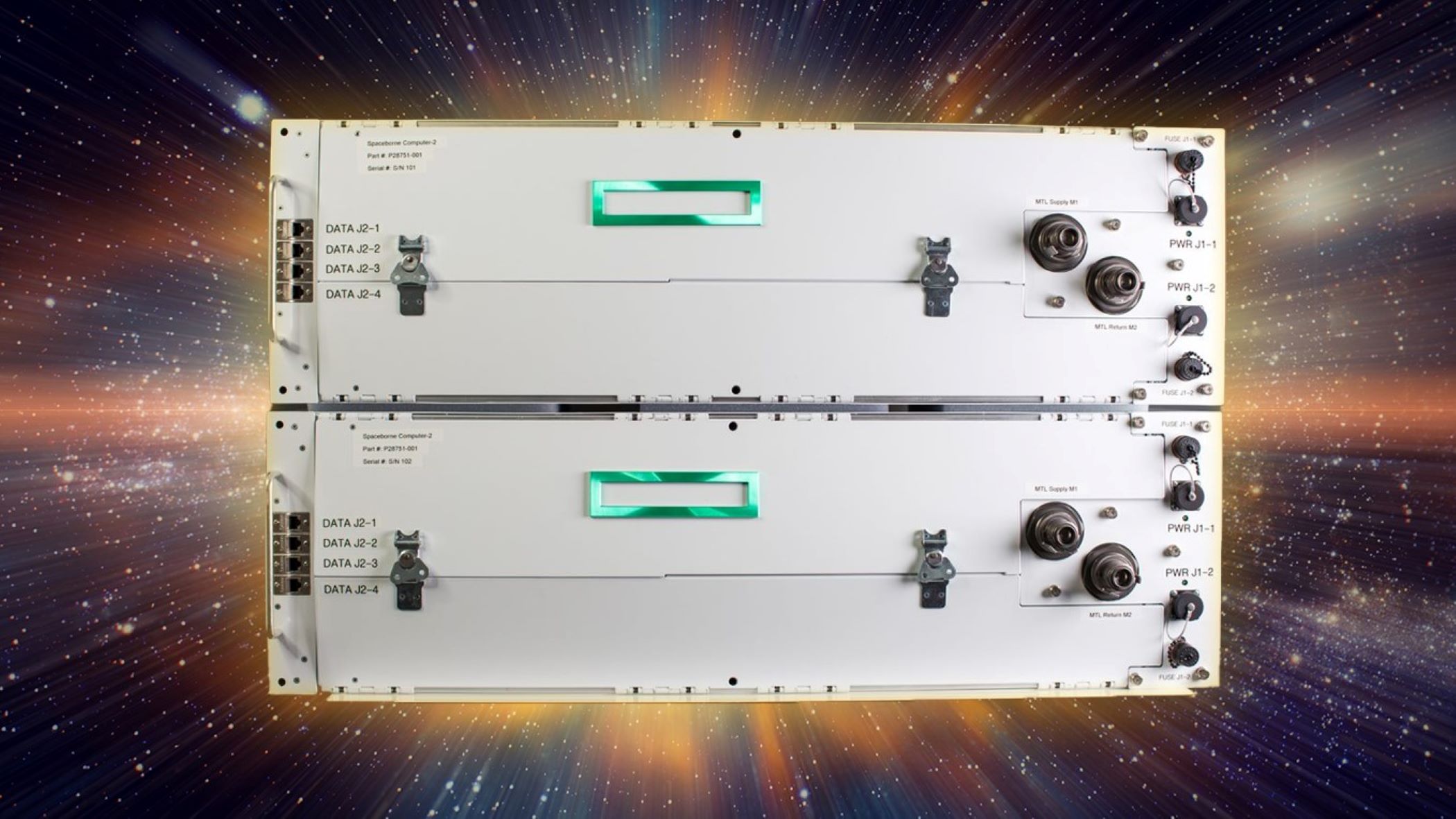HPE, Microsoft to launch AI capabilities to space station with Spaceborne Computer-2
It's a giant leap for cloud computing.

Cloud computing and artificial intelligence are about to meet in a new space station device.
Microsoft will connect its cloud computing Azure Space platform to the Spaceborne Computer-2, a Hewlett-Packard Enterprise product promising to "deliver edge computing and [artificial intelligence] capabilities to the International Space Station (ISS)."
Spaceborne Computer-2 will launch to space Feb. 20 aboard a Northrop Grumman Cygnus cargo craft that will also deliver tons of other supplies, experiments and food for the station's Expedition 64 astronauts. An Antares rocket will launch the Cygnus NG-15 cargo mission from NASA's Wallops Flight Facility on Wallops Island, Virginia.
Spaceborne Computer-2's mission could last two or three years. Once the computer is up and running in orbit, researchers will be able to use the Azure cloud system to do intensive processing or to transmit results back to the device. The computer is based on HPE's Edgeline Converged Edge system designed to operate in harsh environments.
Growing plants in space, modeling dust storms on Earth to assist with Mars mission planning, and doing ultrasound medical imaging for astronaut health care are some of the many fields that the collaboration will address, the companies said in a press release.
Artificial intelligence (AI) and a closely related field, machine learning, allows for computers to make decisions based on the data they receive to feed the most salient information to humans. AI and machine learning can also take on more repetitive data tasks, allowing humans to focus on different work.

The technology has promise, although some worry about the "black box" in which computers make decisions in which metrics may be poorly known to humans. But the benefits in space include saved time for astronauts and cosmonauts, who have tight schedules working in a remote environment where fast Internet cannot always be guaranteed.
Get the Space.com Newsletter
Breaking space news, the latest updates on rocket launches, skywatching events and more!
"The combined advancements of Spaceborne Computer-2 will enable astronauts to eliminate longer latency and wait times associated with sending data to-and-from Earth, to tackle research, and gain insights immediately for a range of projects," the release added.
The new project builds on the lessons learned from a predecessor proof-of-concept device, called Spaceborne Computer. This flew to the space station for a one-year mission in 2017 to investigate computer reliability in space, amid a harsh environment that includes high radiation and zero gravity.
"The goal was to test if affordable, commercial off-the-shelf servers used on earth, but equipped with purposefully-designed software-based hardening features, can withstand the shake, rattle and roll of a rocket launch to space, and once there, seamlessly operate on the ISS," the press release said, adding the predecessor mission was a success.
"Additionally, gaining more reliable computing on the ISS is just the first step in NASA's goals for supporting human space travel to the moon, Mars and beyond where reliable communications is a mission critical need," the release noted.
Microsoft and SpaceX are also working together on an Azure Space project. In October, the companies announced Microsoft will access SpaceX's fast-growing Starlink network of satellites for a new "Azure Modular Datacenter". This would be a unit that could be deployed anywhere, even in remote environments, to create remote connectivity access or support existing access.
Follow Elizabeth Howell on Twitter @howellspace. Follow us on Twitter @Spacedotcom and on Facebook.
Join our Space Forums to keep talking space on the latest missions, night sky and more! And if you have a news tip, correction or comment, let us know at: community@space.com.

Elizabeth Howell (she/her), Ph.D., was a staff writer in the spaceflight channel between 2022 and 2024 specializing in Canadian space news. She was contributing writer for Space.com for 10 years from 2012 to 2024. Elizabeth's reporting includes multiple exclusives with the White House, leading world coverage about a lost-and-found space tomato on the International Space Station, witnessing five human spaceflight launches on two continents, flying parabolic, working inside a spacesuit, and participating in a simulated Mars mission. Her latest book, "Why Am I Taller?" (ECW Press, 2022) is co-written with astronaut Dave Williams.
